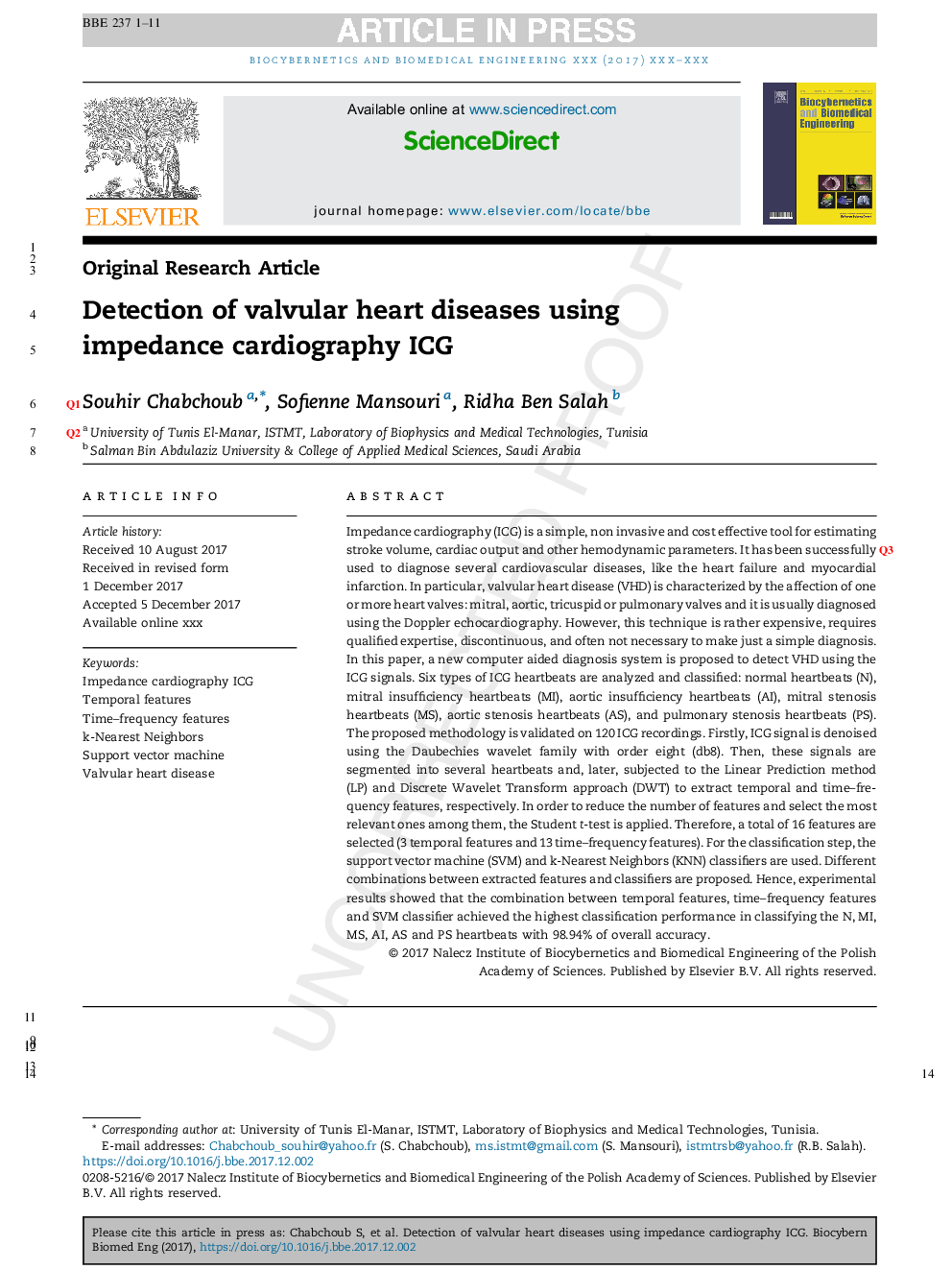| Article ID | Journal | Published Year | Pages | File Type |
|---|---|---|---|---|
| 6484164 | Biocybernetics and Biomedical Engineering | 2018 | 11 Pages |
Abstract
Impedance cardiography (ICG) is a simple, non-invasive and cost effective tool for monitoring hemodynamic parameters. It has been successfully used to diagnose several cardiovascular diseases, like the heart failure and myocardial infarction. In particular, valvular heart disease (VHD) is characterized by the affection of one or more heart valves: mitral, aortic, tricuspid or pulmonary valves and it is usually diagnosed using the Doppler echocardiography. However, this technique is rather expensive, requires qualified expertise, discontinuous, and often not necessary to make just a simple diagnosis. In this paper, a new computer aided diagnosis system is proposed to detect VHD using the ICG signals. Six types of ICG heartbeats are analyzed and classified: normal heartbeats (N), mitral insufficiency heartbeats (MI), aortic insufficiency heartbeats (AI), mitral stenosis heartbeats (MS), aortic stenosis heartbeats (AS), and pulmonary stenosis heartbeats (PS). The proposed methodology is validated on 120 ICG recordings. Firstly, ICG signal is denoised using the Daubechies wavelet family with order eight (db8). Then, these signals are segmented into several heartbeats and, later, subjected to the linear prediction LP and discrete wavelet transform DWT approaches to extract temporal and time-frequency features, respectively. In order to reduce the number of features and select the most relevant ones among them, the Student's t-test is applied. Therefore, a total of 16 features are selected (3 temporal features and 13 time-frequency features). For the classification step, the support vector machine SVM and k-nearest neighbors KNN classifiers are used. Different combinations between extracted features and classifiers are proposed. Hence, experimental results showed that the combination between temporal features, time-frequency features and SVM classifier achieved the highest classification performance in classifying the N, MI, MS, AI, AS and PS heartbeats with 98.94% of overall accuracy.
Related Topics
Physical Sciences and Engineering
Chemical Engineering
Bioengineering
Authors
Souhir Chabchoub, Sofienne Mansouri, Ridha Ben Salah,
